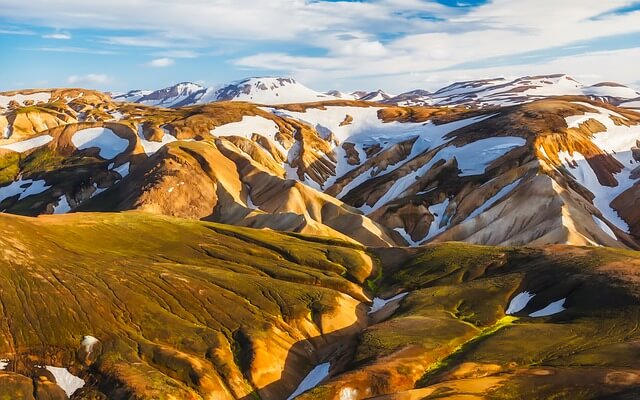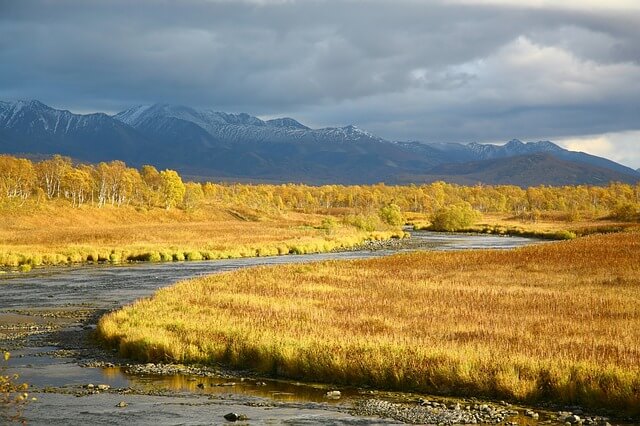What are the characteristics of tundra biome, tundra plants and animals? Information about tundra vegetation, soil and facts.

TUNDRA, The term, derived from a Finnish word which refers to “barren land” or “hostile territory,” has come to refer generally to the treeless zone of the Arctic. In common usage, it now applies either to the type of vegetation that prevails beyond the timber line or to the area as a whole.
The tundra zone lies at high latitudes; its position shifts considerably from continent to continent: the maps of different authors are somewhat at variance, according to their reliance primarily on climatic factors or on vegetation. It can be said that it harbors no trees, even if dwarf forms or dwarf individuals of some tree species, such as black spruce, are occasionally present. It is a region of very low winter temperatures, and no summer month has an average temperature above 50 °F. The winds are generally strong all year long. The total precipitation is almost always low.
Tundra plants belong to the following main groups: (1) lichens, which form crusts on the surface of rocks or soft hygroscopic mats on the soil; (2) mosses, which fill cracks in the rocks and are embedded in the coarse gravel; (3) grasses and grasslike herbs, growing either in tufts or in linear strips ; (4) cushion plants, with small, compact leaves, mostly woody at the base, and plunging a robust taproot into the gravel; and (5) low shrubs, either creeping or compact and twiggy. Some remarkable features of tundra plants are the almost complete lack of annual species ; the prevalence of vegetative propagation over sexual reproduction, and the relative frequency of parthenogenetic processes ; the adaptability of most species to several habitats ; and the very small number of species in any one region.
Tundra animals also are few in number, although they sometimes achieve large populations. Such is the case of the lemmings, with their cyclic fluctuations in numbers. The musk ox and the polar bear are strictly tundra animals, whereas the Barren Ground caribou, the snowy owl, and even the ptarmigan range south to the taiga. The seas are extremely rich in aquatic mammals. A large number of birds have their breeding ground in the tundra: its long light hours in the summer are highly favorable to extensive food gathering and the feeding of large flocks of young. Ducks, geese, and plovers are especially well represented, as well as buntings, longspurs, and pipits. Ptarmigans are permanent residents ; although as brown as the ground in the summer, they molt to a white winter plumage.

Tundra vegetation consists of several types, such as wet tundra or dry tundra. In fact, the nature of the topography exerts considerable influence over the plant communities. Algal and lichen crusts hang thinly on smooth cliffs, whereas cornices and shallow gravels have scattered tufts of rosette plants and grasslike herbs. Outwash plains and deep gravels are strewn with cushion plants, trailing willows, or mountain avens, and sometimes, especially in wet places, they are covered by a carpeting meadow. Gentle slopes and ravines contain heathlike shrubs overlying a matrix of bedded mosses.
Tundra soil is shallow, for it lies over a permanently frozen substratum, the permafrost. The layer that thaws during the summer, and within which plant roots and bacterial life are active, varies in thickness according to the texture : it is deep on coarse gravel, very thin on clay.
Alpine tundra is, in most respects, similar, although it has no permafrost, is often subjected to heavy summer rains, and harbors many endemic plants and animals.
mavi